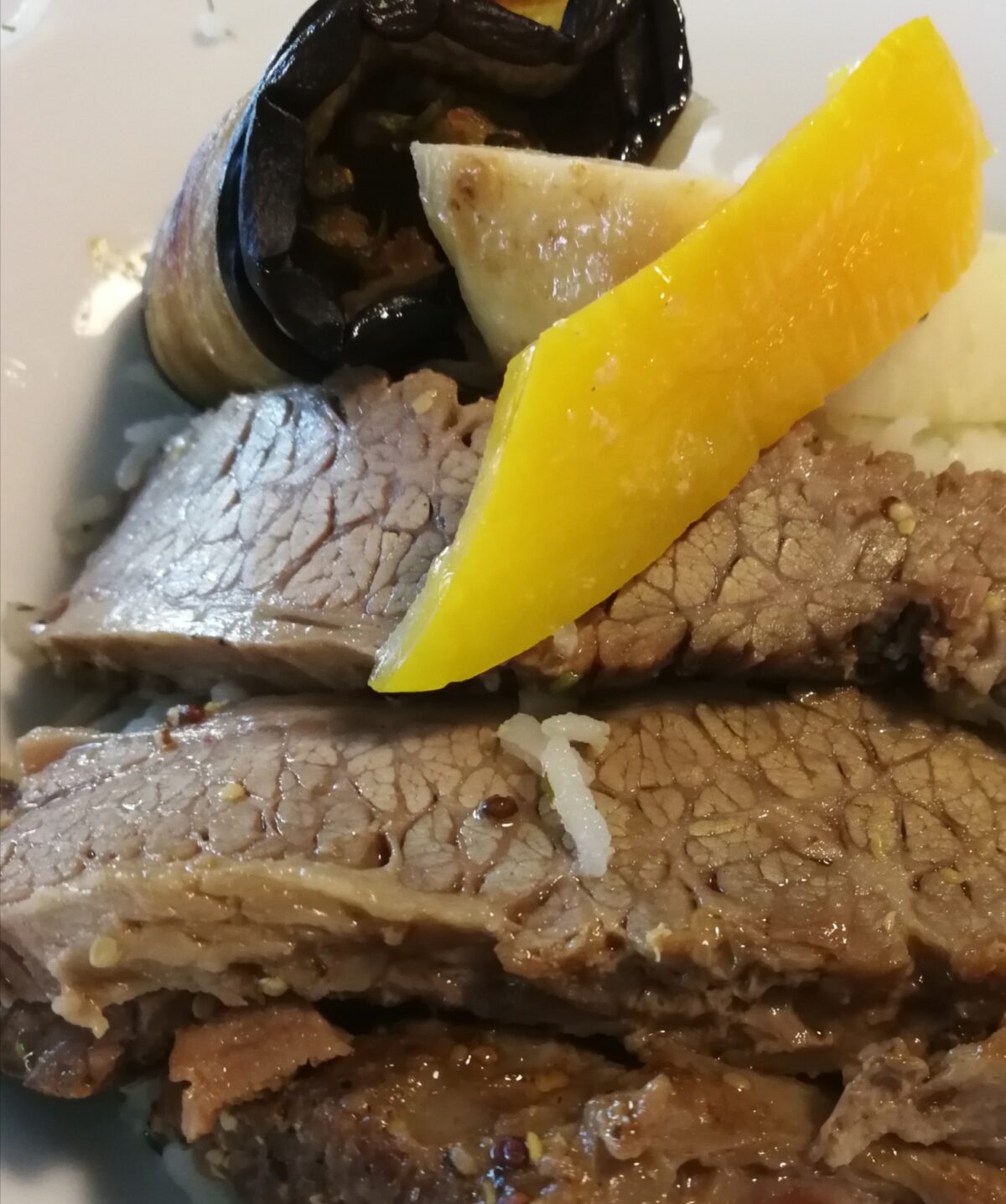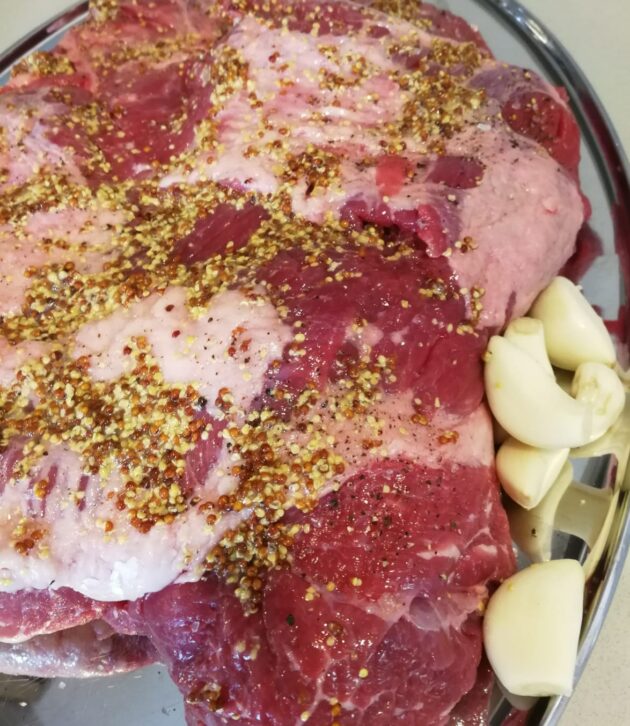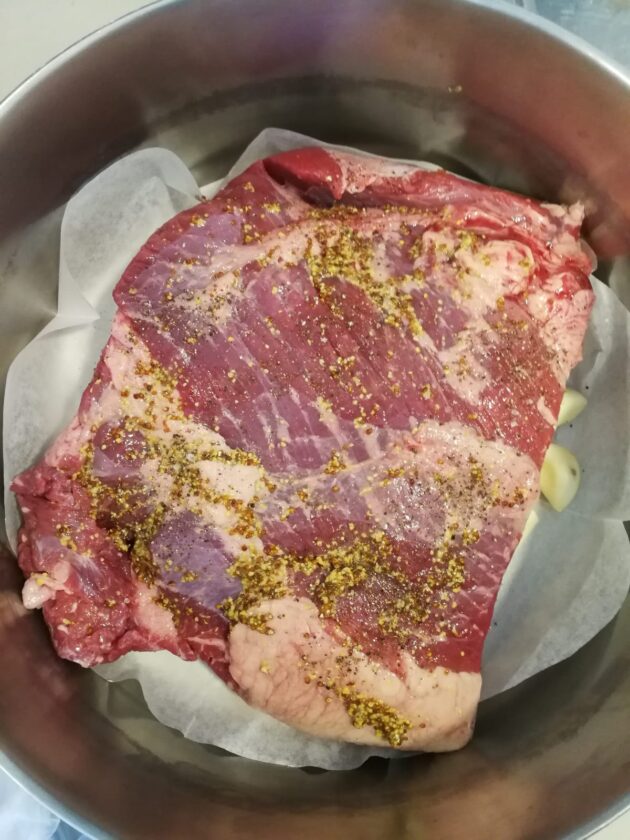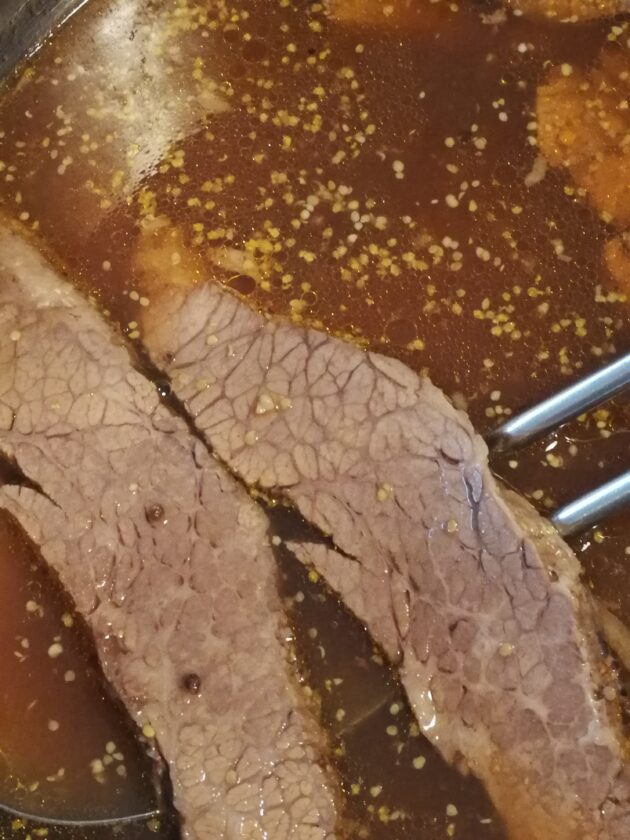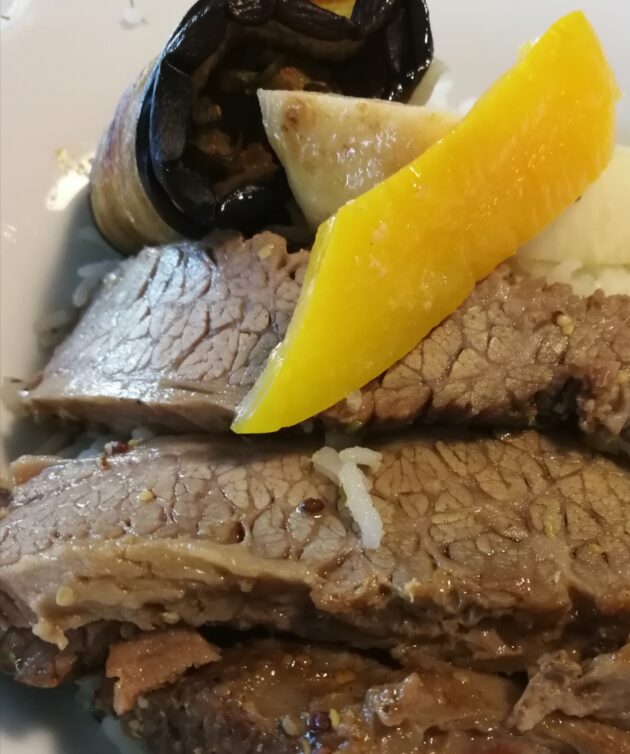Brisket, the Poor Man’s Butcher’s Cut.
Winter down under is a good opportunity to sharpen your knives and try a long-cook culinary experience while making big savings in the process.
Brisket is a singularly unsavoury name for any cut of meat that derives its naming rights from Scandinavian dialects translated as ‘cartilage’. The brisket is basically the pectoral muscles of the bovine beast and as you can imagine when a cow stands up for most of its life chewing its cud, its “pecs” will get quite tough.
This cut of meat was once pretty popular fare in the puggy streets of the teeming East European shtetls before the big ‘H’, but its real rise to fame came about after the movement of three million odd Jews from Eastern Europe to the United States in the late nineteenth and early twentieth centuries. Smoked and long cooking brisket became both popular and considered ‘top notch’ in the Jewish delicatessens and homes of New York’s Lower East Side.
Brisket, as one of the toughest cuts of meat from the ‘beasty’, is also one of the cheapest cuts available. To render brisket both edible and delicious it must be cooked for hours, either by smoking or by cooking in the oven in a seasoned stock with an air tight lid. In defence of Jewish choices of cheaper meats, kosher laws prescribe that the hind quarters of the beast are not kosher and cannot be consumed, thus giving few alternative choices to the kosher observant Jew who doesn’t want to or can’t spend that much when planning what to put in his/her pot. As most Ashkenazi Jews were pretty much observant until a hundred years ago, a lot of traditions and cultural mores became part of the popular American Jewish culture, one of these being ‘the brisket’.
As a New Zealander who grew up with plenty of well priced good cuts of beef, I never really came across brisket until I arrived in Israel and more recently started cooking for Jewish Americans who have a penchant for their long cooking sabbath brisket.
Brisket can be seasoned with a variety of ingredients. Raw garlic cloves and shallots are great taste enhancers; Dijon mustard, coarse black pepper and koshering salt are a must.
Brisket goes with either rice or potato side dishes and believe it or not, its strong flavour and tender texture make it a classy cut at super bargain basement prices.
Brisket for a decent gathering or an ongoing meal of leftovers
Ingredients
- Cut of brisket x 2.5-3 kg
- Shallots peeled, left whole, x good handful
- Teeth of one garlic clove, peeled, left whole
- Olive oil, good shluk
- Dijon mustard x 2-3 tablespoons
- Cracked fresh pepper x 1 tablespoon
- Koshering salt x 2 tablespoons
- Smokey BBQ sauce, ? of bottle
- Water x 1 litre
- Baking paper x 2 sheets
- Aluminium foil
Method
Preheat oven to 165 Celsius.
Place a sheet of baking paper in the bottom of large baking or oven dish, place the brisket on it, pour olive oil over meat, rub it all over, plop mustard on meat, rub all over, scatter garlic and shallots on top of meat, sprinkle the salt and pepper evenly over meat, mix the BBQ sauce with the water and pour into oven dish. Place the second sheet of baking paper on the meat then cover the baking paper with two layers of aluminium foil, ensuring it is closed hermetically around the rim of the baking or oven dish, and put into the top half of the oven. The object is to cook this for 3.5-4 hours without the liquid evaporating.
If successful, and its hard not to be with brisket, you will have had a truly classic American Jewish culinary experience.
Have a nice weekend. Sof shavuah nayem.
If you enjoyed this recipe why not share it with your friends via social media or e-mail? If you want a copy of your own select the print option at the top of the page.

